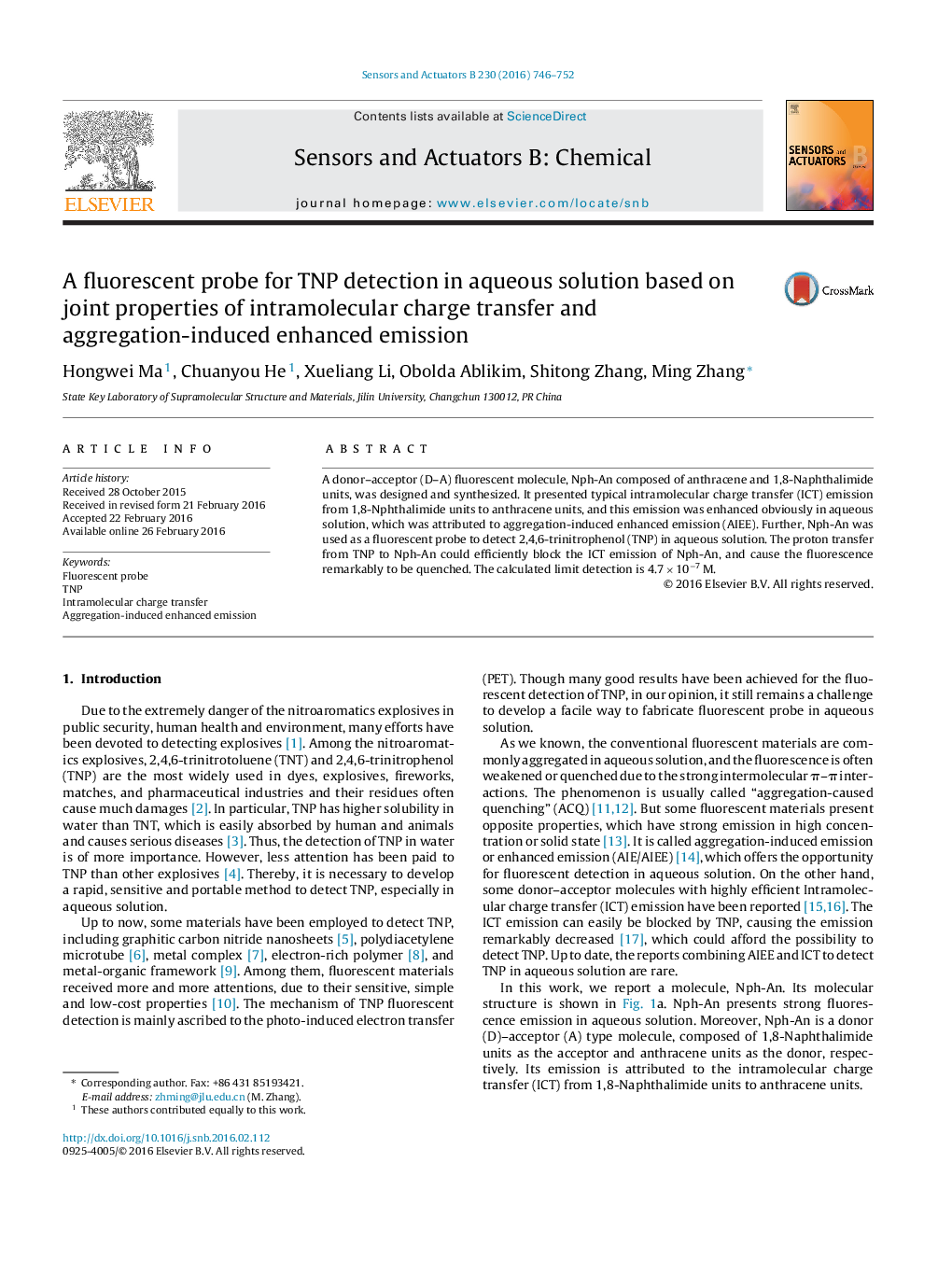| Article ID | Journal | Published Year | Pages | File Type |
|---|---|---|---|---|
| 741369 | Sensors and Actuators B: Chemical | 2016 | 7 Pages |
Abstract
A donor–acceptor (D–A) fluorescent molecule, Nph-An composed of anthracene and 1,8-Naphthalimide units, was designed and synthesized. It presented typical intramolecular charge transfer (ICT) emission from 1,8-Nphthalimide units to anthracene units, and this emission was enhanced obviously in aqueous solution, which was attributed to aggregation-induced enhanced emission (AIEE). Further, Nph-An was used as a fluorescent probe to detect 2,4,6-trinitrophenol (TNP) in aqueous solution. The proton transfer from TNP to Nph-An could efficiently block the ICT emission of Nph-An, and cause the fluorescence remarkably to be quenched. The calculated limit detection is 4.7 × 10−7 M.
Related Topics
Physical Sciences and Engineering
Chemistry
Analytical Chemistry
Authors
Hongwei Ma, Chuanyou He, Xueliang Li, Obolda Ablikim, Shitong Zhang, Ming Zhang,
